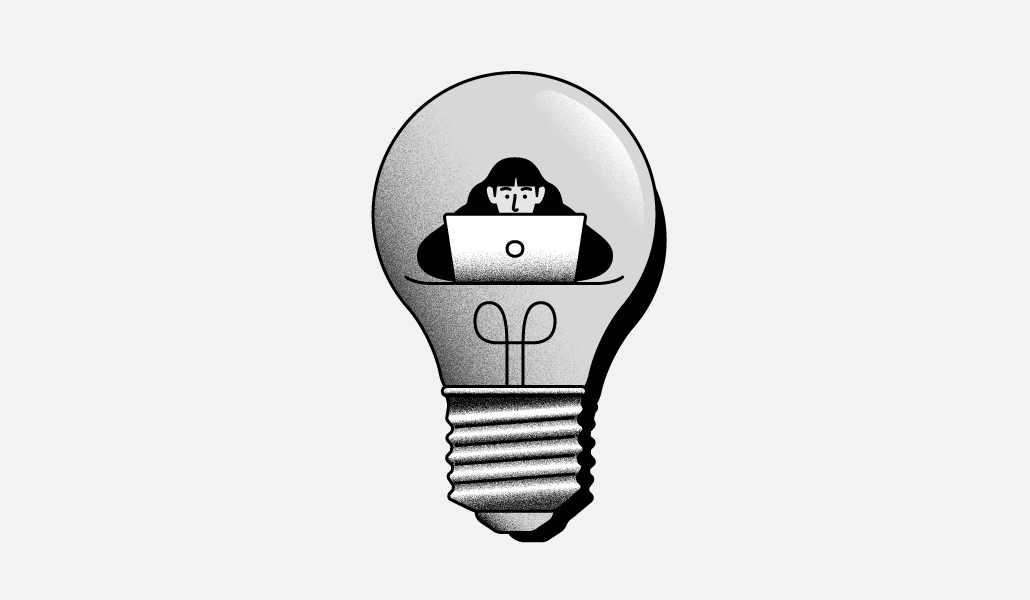Can lighting really impact work productivity?

When thinking about workplace wellness, the kind of lighting used overhead might not be top of mind. But research shows that circadian rhythm lighting can not only improve sleep at night, but boost productivity at work.
Circadian rhythm lighting follows the natural sleep/wake cycles of the human body. So the body’s circadian clock responds to light as a signal to be awake, and dark as a signal to fall asleep.
According to Rensselaer Polytechnic Institute’s Lighting Research Center, people spend more than 90% of their time indoors, yet little attention has been given to understanding light’s effects on health in the so-called built environment, like a workplace for example.
In 2019, the RPI research firm conducted a study with 109 participants to see how light affected their mood and sleep quality. Those who had high circadian-effective light exposure fell asleep more quickly, experienced less depression and had better quality sleep compared to those who received low circadian-effective light exposure. The researchers’ conclusion: Lighting designers, architects and facilities managers should more often consider how to use electric lighting to supplement daylight and ensure every office worker receives sufficient daytime circadian-effective light to promote better health and well-being.
“People try to make this really complicated, but it’s not,” said Elizabeth Calabrese, principal architect and educator of biophilic design at the University of Vermont. “Our bodies still want natural systems and processes, what our ancestors had from the natural world. We need those connections to feel good, to see daylight, to know the seasons, to orient ourselves…it’s about creating healthy habitats for people as biological organisms. We are a part of nature, but we forget that as technology takes over.”
Even knowing what the weather is outside could help an employee.
“How disorienting is that when you go into the office and it’s dark when you get in in the morning and then it’s dark when you get out of the office in the evening,” said Calabrese. “Talk about depression. You wonder why so many people suffer from anxiety and depression. Often it’s the environments we’re putting people into.”
Although daylight is the ideal light source for the circadian system, workplace design could include circadian lighting, which is designed to mimic the pattern of the body’s natural circadian rhythm, attempting to counteract the adverse effects of manufactured light.
“It’s all site-specific and situation-specific,” said Calabrese. “One thing that tends to happen with design standards is this one-size-fits-all solution.”
For example, there might be offices or factories that are below ground, which would call for a completely different design solution. When food and beverage brand Clif Bar & Company designed its 300,000-square-foot bakery in Idaho, it incorporated light-directing solatubes (technology that captures the sun’s rays from a roof and transfers them downward through reflective tubing) to bring light down through the entire building.
Other places, like shopping malls, hospitals and airports for example, might have vaulted skylights to bring light in. To supplement the natural light, there are also lighting fixtures that can change degrees Kelvin (a unit of measurement used to describe the hue of a specific light source), which is the color of light, to correspond with the time of the day.
“It doesn’t have to be a really expensive approach,” said Calabrese. “It isn’t like only high-budget jobs can do this, it’s just mindful designing and looking at a particular situation and knowing the goal is to connect to their natural rhythms.”
New York-based lighting company AWA Lighting Designers is using technology to infuse light with wavelengths that the eye doesn’t see. That means visually the perception of light is the same, but people get the benefits of using the wavelengths for circadian entrainment. In the past, offices wanted only blue light, which is beneficial during daylight hours because it can boost attention, reaction times and mood, and that was done with fluorescent light bulbs that workers often said caused headaches.
“That’s where we feel the world is headed, whether in residences, in the office, while flying or in the hospital,” said AWA design principal and CEO Abhay Wadhwa. “Everyone is on the bandwagon of making it smarter…but we’re finally waking up to how we humanize light. It was always about how to treat the architecture and material, and not so much about the human being using it. There’s a big paradigm shift that we have been speaking out about. It’s not about wood or stone, it’s about the people working or living in it.”
Wadhwa added that blue wavelengths, which help the circadian rhythm during the day, can be infused without the human eye seeing them. That way the circadian rhythm is still being attended to, while also leaving behind the negative impacts of blue light.
Companies including LYS Technologies are trying to bring more attention to the impact light has on humans. LYS offers technology that allows employees to track their light exposure and understand light’s impact on sleep and energy, as well as a workplace well-being platform for employers to review team data for an understanding of the office environment’s impact on sleep and energy. According to LYS, a 100-person company would have 35 colleagues suffering from sleep loss and a 6% decrease in productivity because of it.

